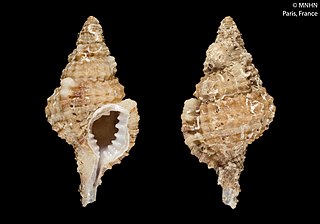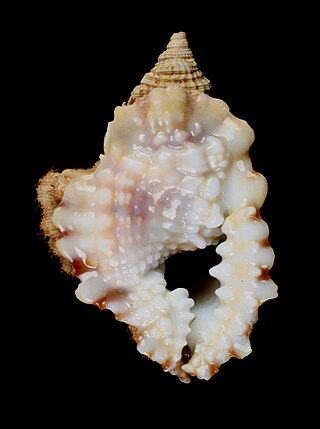
Camarasaurus was a genus of quadrupedal, herbivorous dinosaurs and is the most common North American sauropod fossil. Its fossil remains have been found in the Morrison Formation, dating to the Late Jurassic epoch, between 155 and 145 million years ago.

The blue iguana, also known as the Grand Cayman ground iguana, Grand Cayman blue iguana or Cayman Island rock iguana, is an endangered species of lizard which is endemic to the island of Grand Cayman. It was previously considered to be a subspecies of the Cuban iguana, Cyclura nubila, but in a 2004 article Frederic J. Burton reclassified it as a separate species because according to him the genetic differences discovered four years earlier between the different C. nubila populations warranted this interpretation. The blue iguana is one of the longest-living species of lizard.

Camarasaurus lewisi is a species of sauropod dinosaur from the Upper Jurassic of the United States. It was named by James A. Jensen in 1988. C. lewisi was originally placed in its own genus, Cathetosaurus, but in 1996 it was reclassified as a species of Camarasaurus; most researchers since have considered it to be one of the four valid species of Camarasaurus. Two unpublished studies have since argued that the genus Cathetosaurus should be reinstated, whereas two other studies have argued that C. lewisi may be a junior synonym of another species of Camarasaurus.

The westslope cutthroat trout, also known as the black-spotted trout, common cutthroat trout and red-throated trout is a subspecies of the cutthroat trout and is a freshwater fish in the salmon family of order Salmoniformes. The cutthroat is the Montana state fish. This subspecies is a species of concern in its Montana and British Columbia ranges and is considered threatened in its native range in Alberta.

The northern Bahamian rock iguana is a species of lizard of the genus Cyclura that is found on Andros Island and the Exuma islands in the Bahamas. Its status on the IUCN Red List is vulnerable, with a wild population of less than 5,000 animals.
Lewis's tuco-tuco is a species of rodent in the family Ctenomyidae. It is endemic to Bolivia.

Campeloma is a genus of gilled operculate freshwater snails in the family Viviparidae.

Euxoa is a genus of moths of the family Noctuidae raised to Genus by the German entomologist, Jacob Hübner. The Genus is mostly confined to dry and semi dry areas in the Northern Hemisphere. There 130 species in Eurasia, a few in Africa, and 175 in North America. There are no species in the Genus in South-East Asia or in Australia. In North America, most species are found in Western regions. Of the North American species, 4 are endemic to Mexico. There is one species recorded from Chile, but this may be a mislabeled specimen. In real terms, species numbers do not equal species abundance. Some areas with few species have large numbers of the ones that do live there.

Sassia is a genus of sea snails, marine gastropod molluscs in the family Cymatiidae.

Personella is a genus of predatory sea snail, a marine gastropod mollusk in the family Cymatiidae. Its only species is Personella lewisi.

Calvadosia is a genus of stalked jellyfish in the order Stauromedusae. It is the only genus in the monotypic family Kishinouyeidae.

Distorsio is a genus of medium-sized sea snails, marine gastropod mollusks in the family Personidae, the Distortio snails.

Distorsionella is a genus of medium-sized sea snails, marine gastropod mollusks in the family Thalassocyonidae.

Trypanosoma lewisi is a globally distributed parasite of Rattus species and other rodents such as mice, and of kangaroo rats in America. Among these host species were two endemic species of rats: Rattus macleari and Rattus nativitatis. Both are now believed to be extinct. It is not very clear whether or not the same parasite infected both species. However, both parasites are very similar. The northern rat flea acts as the vector for the parasite, harboring the epimastigote stage in its midgut. The trypomastigote is the stage that is present in the main host, the rodent. The epimastigote form attaches itself to the rectum of the insect using its flagella to burrow through the rectal walls. The parasites also appear in the flea's feces. Ingestion of either the flea or its feces during grooming infects the host rodent with the parasites. T. lewisi is normally non-pathogenic but is known to have produced fatal infections in rats.

Pinjalo is a genus of marine ray-finned fish, snappers belonging to the family Lutjanidae. They are native to the Indian Ocean and the western Pacific Ocean
Epiperipatus lewisi is a species of velvet worm in the Peripatidae family. This species varies from grey to dark reddish brown on its dorsal surface and has 34 to 36 pairs of legs. The type locality is in Jamaica.
Euxoa lewisi, the Oregon dart, is a species of cutworm or dart moth in the family Noctuidae. It is found in North America.

Poecilocoris lewisi, known as the clown stink bug, is a species of shield bug found in eastern Asia.

Thalassocyonidae is a family of sea snails in the superfamily Tonnoidea and the order Littorinimorpha.
Pinjalo lewisi, the slender pinjalo or red pinjalo, is a species of marine ray-finned fish, a snapper belonging to the family Lutjanidae. It is found in the Indian and Western Pacific Oceans.
















